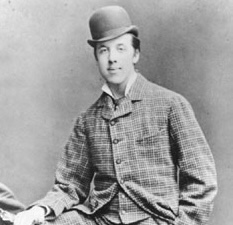The writing style of
Oscar Wilde
Oscar Wilde
1854-1900
Irish poet and playwright known for his wit, flamboyant style, and plays such as 'The Importance of Being Earnest'.
Oscar Wilde, a luminary of 19th-century literature, is celebrated not only for his wit and flamboyance but also for a distinctive writing style that continues to captivate scholars and readers alike. His approach to writing is as intricate as it is enchanting, marked by a blend of eloquence, irony, and a profound use of symbolism.
Wilde’s sentence structure often carries a rhythmic quality, akin to the cadences found in poetry. His sentences are typically complex, adorned with clauses that enhance their lyrical nature. This complexity does not obscure clarity but rather enriches the narrative, allowing for a multifaceted interpretation of his themes. Wilde’s adept use of punctuation further contributes to the musicality of his prose, with commas, semicolons, and dashes carefully placed to give the reader pause and effect.
Diction in Wilde’s work is deliberately chosen to evoke specific atmospheres and character insights. He often opts for words that are lush and evocative, mirroring the opulence and decadence of his settings and characters. This choice of language not only reflects the aestheticism movement, of which he was a prominent figure, but also serves to satirize the very societal norms his characters often embody.
Wilde’s employment of irony is perhaps one of the most distinctive aspects of his style. It serves as a vehicle for his critiques of Victorian society, questioning the morality and sincerity of the upper classes. This irony is often delivered through epigrams—short, witty statements that reveal contradictions in societal norms and human behaviors. These epigrams are strategically placed to challenge the reader’s preconceptions and to highlight the absurdities of life.
The structure of Wilde’s works often follows a traditional narrative arc but is infused with symbolic elements that reveal deeper truths. Characters and settings are not only realistic but also embody broader themes such as beauty, morality, and deception. This symbolic layering invites readers to look beyond the surface, engaging with the text on multiple levels.
In crafting his narratives, Wilde seamlessly integrates these elements, creating works that are both intellectually challenging and aesthetically pleasing. His style is a testament to his belief in art for art’s sake, where the beauty of the form is just as important as the depth of the content.
